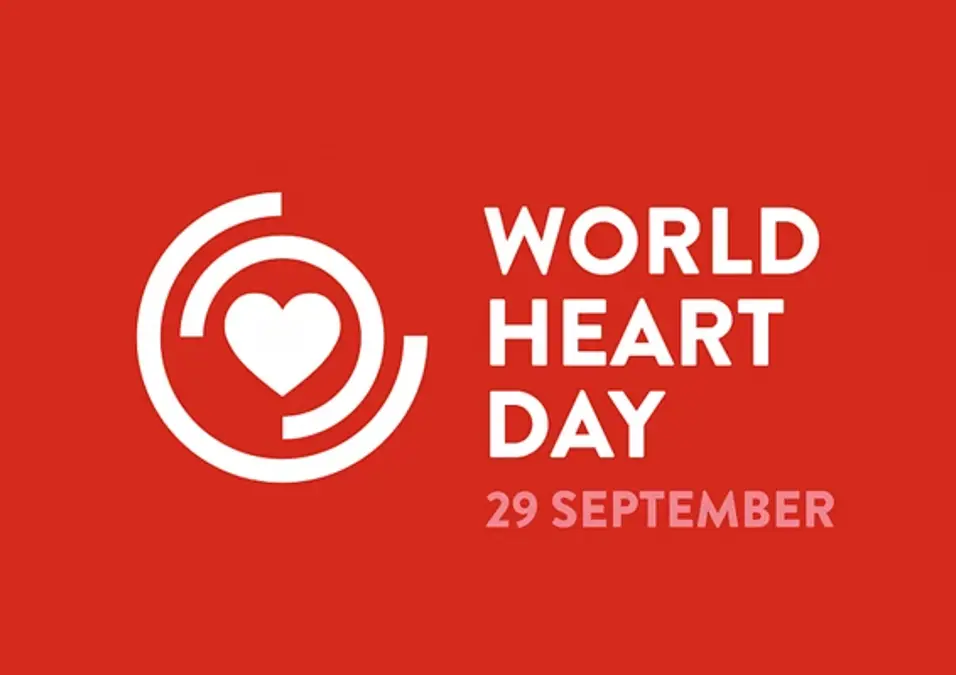World Heart Day

SIGN UP FOR YOUR FREE DAY PASS TODAY!
World Heart Day has been celebrated every year on 29th September since it was first dreamed up in 2012, when world leaders recognised the global threat posed by non-communicable diseases (NCDs) and committed to reducing related mortality by a quarter by 2025. Gyms in Dubai are gearing up for World Heart Day to raise awareness and promote heart health to their members. Signing up for a gym membership is a great option to consider as it keeps you fit whilst reducing the risk of any chronic diseases.
The aim
Cardiovascular disease (CVD) and related symptoms are responsible for roughly half of all NCDs. CVD is the biggest killer in the world. Globally, it claims nearly 18 million people annually.
World Heart Day was set up by the World Heart Federation in large part to counter this- it is a day to unite and fight the rise in CVD. It is a chance to inform people the world over about CVD, including common conditions like stroke and heart disease. It showcases what average people, groups and corporations can do to combat and control CVD, how it can be avoided, reversed and managed, and what measures need to be put in place to keep us all safe from it.
It is estimated that at least 80% of premature deaths from CVD could be avoided with a few simple lifestyle changes. Educational initiatives surrounding World Heart Day focus on diminishing risk factors at the individual level, highlighting the role of poor diets, sedentary lifestyles, obesity, tobacco and alcohol use, among others, in propagating CVD. It also focusses on how these factors can be controlled at the familial, societal and governmental levels, leading to happier, healthier communities.
CVD has many interrelated causes, from smoking, diabetes, high blood pressure and obesity, to air pollution, and rare and neglected conditions such as Chagas Disease and cardiac amyloidosis.
The World Heart Federation are clear in their belief in a better tomorrow. They and their members show us that there can be a world in which heart health is a fundamental human right, a critical component of global health and stability to be cherished and nurtured.
COVID-19
These are unprecedented times. COVID-19 has swept the world, underlining structural health inequalities across the globe and showing us how vulnerable we can become if we allow ourselves. In the age of COVID-19, CVD patients are faced with a double-edged threat. Not only are they more at risk of developing severe forms of the virus, but they may also be afraid to seek ongoing care for their hearts. Stronger, healthier hearts form a large factor in putting us outside the danger zone of diseases like coronavirus: we need to look after our heart health now more than ever.
As fitness professionals and exercise enthusiasts, we are acutely aware of the role we can play in this fight. There are many improvements that fitness can bring to overall and heart health. To begin with, we would like to focus on one that generally sits at the apex of sedentary lives combined with unhealthy diets: the risk brought about by obesity.
Obesity, BMI and heart health
Obesity is a global epidemic, with increases in global levels year on year. For this reason, it’s vital that people begin to understand basic measurements of healthy weight ranges and the importance of honouring them.
Though crude, the body mass index (BMI) is a good first step in understanding healthy weight ranges. It is a measure that uses your height and weight to work out if you are a healthy size.
Calculation of BMI is elegant and useful. It uses a relatively straight forward formula, dividing your weight in kilograms by your height in metres squared. The resulting number, which is usually between about 15-40, is compared against the BMI chart. Where it lies on the BMI chart will indicate whether an individual is underweight, a healthy weight, overweight or obese.
BMI ranges
Most people will want a BMI between 18.5 to 24.9: this is the healthy range for the general population. It will definitely be the healthy range for those with a normal musculature and build. Those with greater muscle mass may see themselves in a healthy weight range at a higher number.
The ranges measure in at:
- below 18.5:underweight
- between 18.5 and 24.9:healthy weight
- between 25 and 29.9:overweight
- between 30 and 39.9:obese
- over 40: severely obese
Heart health will stand its best chance of being optimised in the ‘healthy weight’ range, between 18.5 and 24.9, for most people.
To find your BMI, your best bet is to use an online BMI calculator. Though it will be rough, and unsuitable for some people, the number you are given will be able to put you in the right ballpark.
If you are unsure about using a BMI calculator, consult your healthcare provider. They will be able to give you all the information you need on both BMI and broader heart health.
Try a gym
To improve your heart health, no matter what your BMI, you should be taking part in regular exercise at the gym. Your heart is a muscle- it needs to be worked in order to stay strong and healthy!
For example, as the name suggests, cardiovascular exercise specifically works your cardiovascular system: the flow of blood and oxygen from your heart.
Exercise strengthens your heart and improves circulation throughout your body, lowering blood pressure and improving pretty much every other indicator of heart health in the process.
In doing this, it decreases your risk of developing CVD: those who don’t exercise or take part in an active lifestyle will generally be about twice as likely to suffer from CVD as those who do.
The benefits of exercise
Regular exercise will deliver numerous physical health benefits, as well as decreasing the chances of developing many chronic diseases. It has been linked to an increased life expectancy and a reduction in the risk of premature mortality.
An active lifestyle will promote strong muscles, bones and soft tissue. It will improve respiratory, cardiovascular, and overall health. Staying active will also help you maintain a healthy weight, reduce your risk of suffering with type 2 diabetes and heart disease, and will reduce your risk of developing many types of cancer. It will also make you happier, reducing symptoms of stress, anxiety and depression.
All of these will help you to combat CVD.
The benefits of going to a gym
The gym is a fantastic option for seasoned athletes and complete newcomers alike. There are several distinct benefits of attending a gym that other styles of, or venues for, exercise may lack.
Firstly, a gym will give you plenty of options, especially these days. There is something for everyone. You might find you like pumping iron in the weights room, or that swimming gets you going. Fitness classes may be your thing as you become obsessed with yoga, or Zumba, or Muay Thai, or body pump, or HIIT training… the list goes on. All will help you to improve your heart health and reduce your risk of CVD.
Secondly, a gym will keep you accountable! If you have a timetabled class, or if you don’t want to waste the money you’ve spent on membership (and who does, after all?) you will stand a greater chance of actually turning up. This will especially be the case as you meet training partners and other people in your class, all of whom will offer encouragement and will make exercise that much more fun.
Gyms are social spaces, usually filled with positive, like-minded people. Make the most out of this fact! Sign up for gym membership at GymNation today!
Finding your gym
There are hundreds of gyms in most modern cities. It can be a bit daunting trying to find the one that works for you. Gym memberships come in all shapes and sizes, as do the venues themselves, and navigating it all can be a little daunting.
Though you can - and should - try out everything you can, and most gyms will allow you to try a day-pass to help you make your choice, nothing quite beats convenience for keeping you on track. Go online, search ‘Gyms Near Me’, and try out the ones closest to you.
If you want to do your bit in the fight against heart disease this World Heart Day, get in touch with your local gym. Speak to their manager, their personal trainers, anyone and everyone you can. Go down, try out a class or two. Jump on the equipment and see what you like. Take a friend with you.
Make new friends there. It doesn’t matter. As long as you are able to keep moving, stay healthy, and keep yourself within a good weight range, you will be setting yourself outside the danger zone for CVD.
GET YOUR FREE TRIAL TODAY
















































































